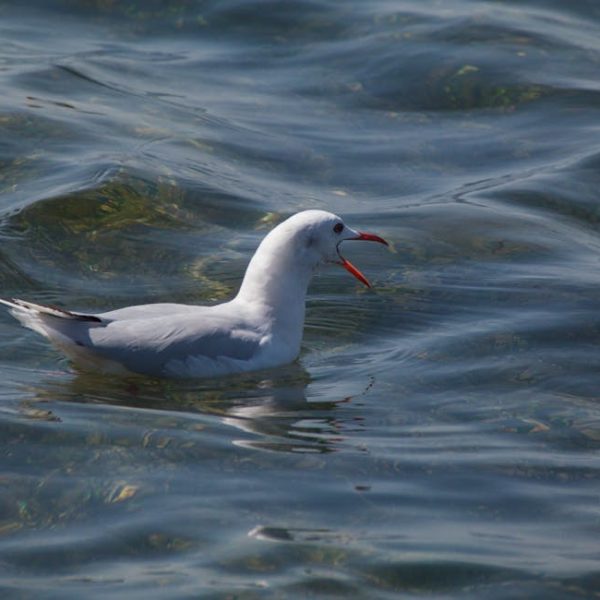Birds have been fascinating creatures for many reasons, one of which includes their diverse survival strategies to sustain life during the harsh winter weather, particularly during the freezing night time conditions. A vital adaptation birds have developed is their ability to lower body temperatures, known as ‘nocturnal hypothermia’. This allows them to conserve valuable energy during winter. Another noteworthy characteristic is their unique feather insulation. When birds fluff up their feathers, they create pockets of air that provide additional warmth, known as feather fluffing.
Furthermore, birds have a metabolic process called thermogenesis. Thermogenesis is a way birds generate internal heat by shivering their muscles. It’s similar to how humans respond when cold; however, birds are much more efficient at producing heat.
Another fascinating survival strategy birds employ during the winter is communal roosting. Some bird species, such as sparrows and starlings, huddle together in large flocks during the winter nights. This approach allows them to share body warmth and protect each other from predators.
Pro Tips: ➤ Birdwatchers can use these adaptations as a guide when looking for birds during winter. Particularly, looking out for fluffed feathers and large flocks can indicate the presence of birds.
Bird Roosting Habitats in Winter
Just as humans need a safe, warm, and comfortable home to weather a cold and dark winter night, birds, too, need a cozy place to sleep. Birds typically use tree cavities, dense bushes, birdhouses, and sometimes even human-made structures for roosting. Tree cavities provide natural insulation and protection from the elements and predators. Dense bushes or conifer trees can offer similar benefits, along with added camouflage. Birdhouses and human-made structures provide a level of safety and warmth which can be life-saving during rough conditions.
However, each roosting habitat type has its advantages and drawbacks. For instance, tree cavities and dense bushes offer natural insulation and protection but may be limited in availability. On the other hand, birdhouses provide a safer and warmer environment but are dependent on human intervention.
Best Practices: Homeowners can help local bird populations by identifying potential roosting habitats in their yards, such as tree cavities or dense bushes, and trying to preserve them. Additionally, individuals can install birdhouses to offer birds a safe and warm roosting spot.
Next, we will delve deeper into the importance of birdhouses and discuss other survival strategies like bird migration and unique sleeping habits of specific bird species.
The Role of Birdhouses and Nest Boxes in Winter
Birdhouses and nest boxes play an essential role in providing birds with a secure and warm roost to sleep during winter nights. They are designed to mimic the natural cavities that birds would typically use for roosting. Birdhouses and nest boxes not only offer protection from the harsh weather but also from predators. Moreover, they can augment the limited natural roosting spaces, thus supporting a larger bird population.
However, there’s more to birdhouses and nest boxes than just their mere presence. Their success in aiding birds during winter hinges on several key factors. These include size, location, design, and maintenance.
✔️ Checklist
1. Size: Ensure the birdhouse or nest box is of an appropriate size to accommodate the bird species you wish to attract.
2. Location: Place the birdhouse in a quiet, predator-free area that’s also sheltered from strong winds.
3. Design: Opt for birdhouses with good ventilation, proper insulation, and a snug fit for the birds. The entrance hole should be of the right size to prevent larger, predatory birds from getting in.
4. Maintenance: Clean the birdhouse regularly to prevent a build-up of parasites or disease.
Pros and Cons
| Pros | Cons |
|---|---|
| Provide protection from harsh weather conditions | Some birds may not use them |
| Increase the available roosting spaces for birds | Need maintenance to remain safe and suitable |
| Can be easily relocated as needed | Potential to attract predators if not placed correctly |
Bird Migrations as a Survival Strategy During Winter Nights
Bird migration is nature’s incredible survival strategy for several species during the winter. As temperatures plummet, food resources become scarce, leading some birds to fly thousands of miles to warmer climates where food is plentiful. Migratory bird species like Swallows, Hummingbirds, and certain types of Hawks are known for their long-distance journeys.
Best Practices: Encourage migratory birds to your yards by providing food, water, and safe resting spots. A bird-friendly yard can offer a much-needed stopover site for these species during their challenging journeys.
Unique Sleeping Habits of Specific Bird Species During the Winter
Specific bird species, like Barred Owls, Chickadees, and Pigeons, have unique sleeping habits during winter nights. Barred Owls will typically roost silently during the day in tree cavities or dense foliage, and hunt at night, using their excellent night vision. Chickadees lower their body temperature and go into a state of regulated hypothermia, reducing their energy needs. And did you know that Pigeons, despite being city birds, prefer to roost in large, dense woods where they are safe from predators?
Each of these species has developed different adaptations to survive the winter, making birdwatching in winter as interesting as it is in any other season.
Pro Tips: Birdwatchers can pay attention to specific signs – like birds fluffed up against the cold, unique calls among dense bushes or certain movements in tree cavities – to spot and identify these species during winter. With a keen eye and some patience, winter birdwatching can be a rewarding experience.
Key Takeaway:
- Birds have developed various survival strategies to withstand harsh winter nights, such as lowering body temperatures, feather fluffing, thermogenesis, and communal roosting.
- Birds utilize different types of roosting habitats during winter nights, including tree cavities, dense bushes, birdhouses, and human-made structures, each with their own advantages and disadvantages.
- Birdhouses and nest boxes play an essential role in providing safe and warm roosting environments during winter and factors like size, location, design, and maintenance are critical for effectiveness.
- Some birds migrate to warmer climates in winter as a survival strategy.
- Certain bird species, like Barred Owls, Chickadees, and Pigeons have distinct sleeping habits during winter nights, adding interest to winter birdwatching.
It’s fascinating to learn about the intricate ways birds adapt to survive winter nights. It’s a reminder of nature’s resilience, emphasizing the importance of supporting these creatures in our own capacities, whether through bird-friendly yards or installing birdhouses. Keep exploring the joys of birdwatching, showing respect for these feathered survivors, and remember – every small action can make a big difference in their lives.
FAQs
Q: How can I make my yard more bird-friendly during winter?
A: There are several ways to make your yard bird-friendly during winter. You can provide food and fresh water, install birdhouses or nest boxes, preserve natural roosting habitats, and minimize disturbance in areas where birds seem to gather.
Q: What kind of food can I provide for birds in winter?
A: Birds can benefit from a variety of foods during winter like sunflower seeds, peanuts, suet, and fruit. Keep in mind that different species may prefer different types of food, so providing a variety may attract a diversity of birds.
Q: How can I identify if birds are using my birdhouse in winter?
A: You can look for signs like birds frequently visiting the birdhouse, especially in the evening hours, or fluffed up birds near the birdhouse, which could indicate they are roosting inside.
Q: How should birdhouses or nest boxes be maintained in winter?
A: Birdhouses or nest boxes should be cleaned out regularly to prevent a build-up of parasites or diseases. Ensure they are secured against winds and inspect them for any damage regularly.
Q: How can I learn which bird species are present in my area during winter?
A: You can join local birdwatching groups, check out online resources, or use bird identification apps to learn about the bird species present in your locality during winter.
Encourage readers to share the article and explore more posts on the website for additional information and insights into the fascinating world of birds.












